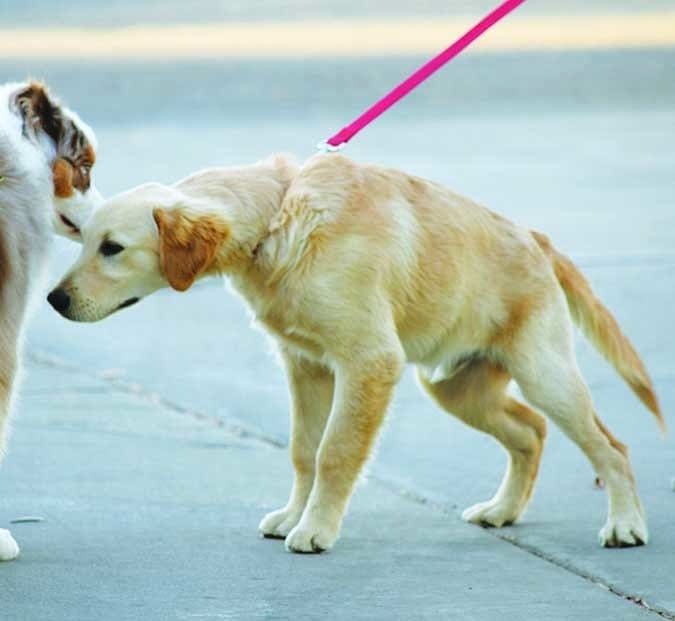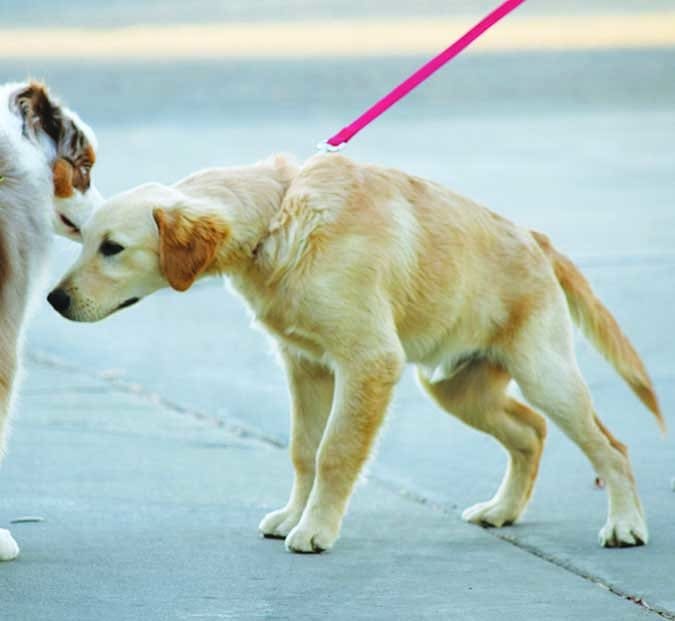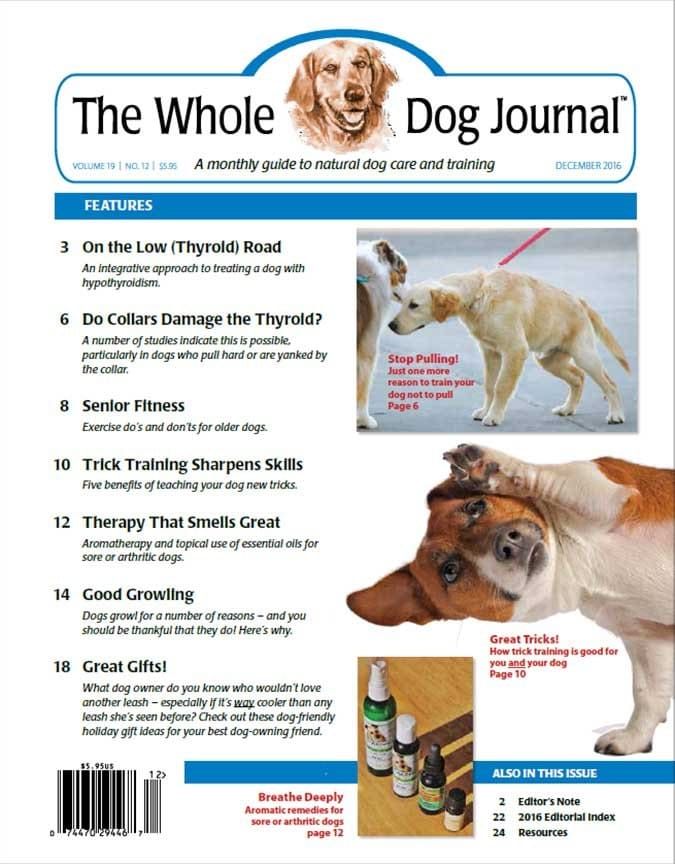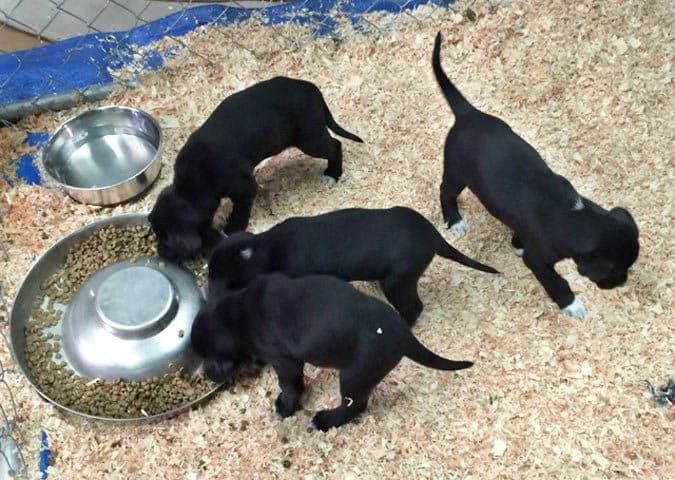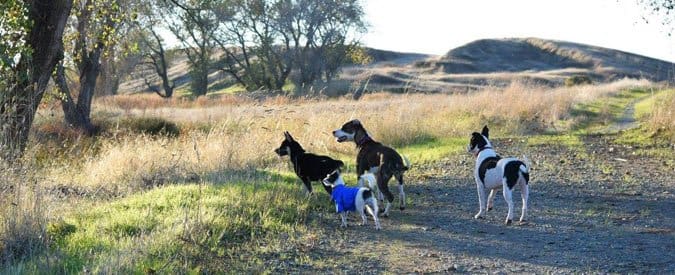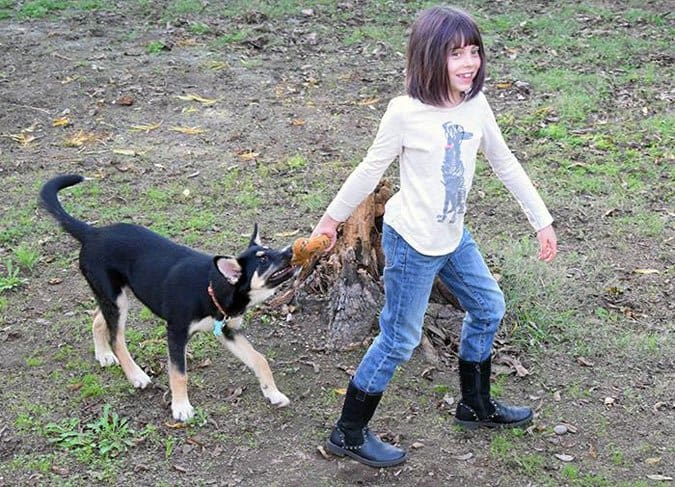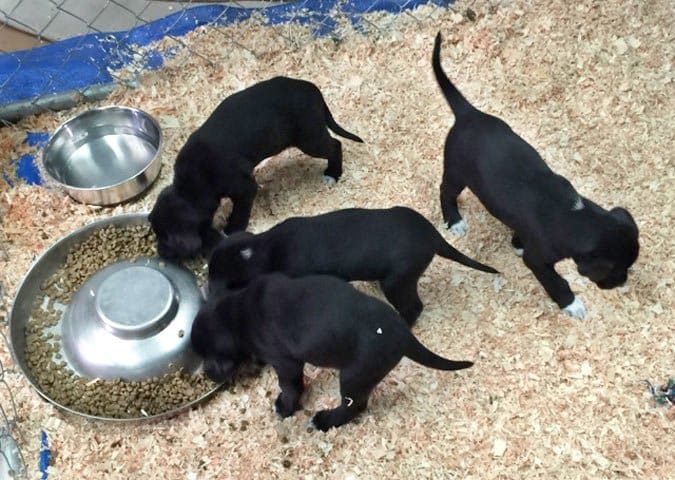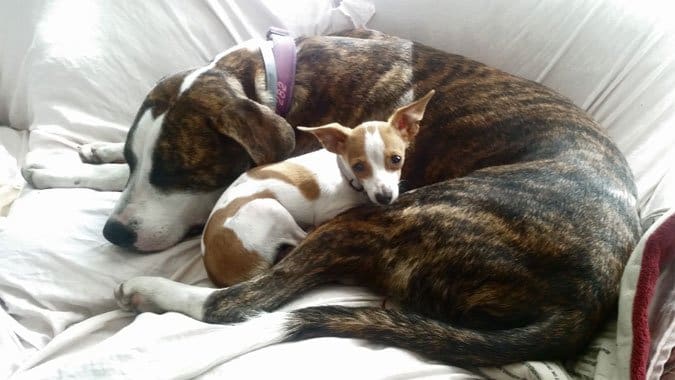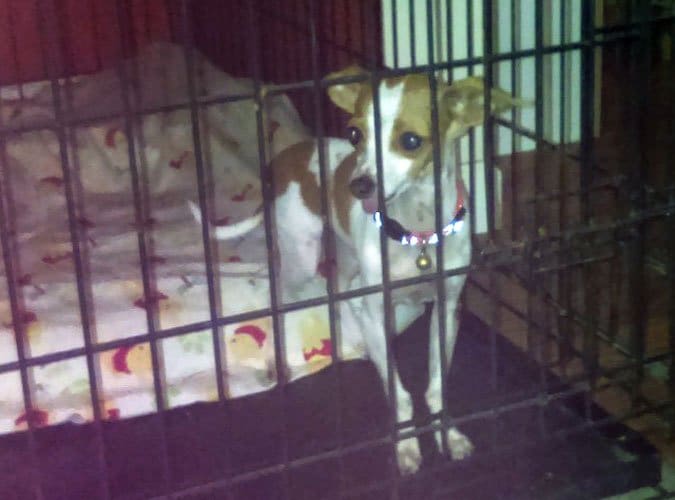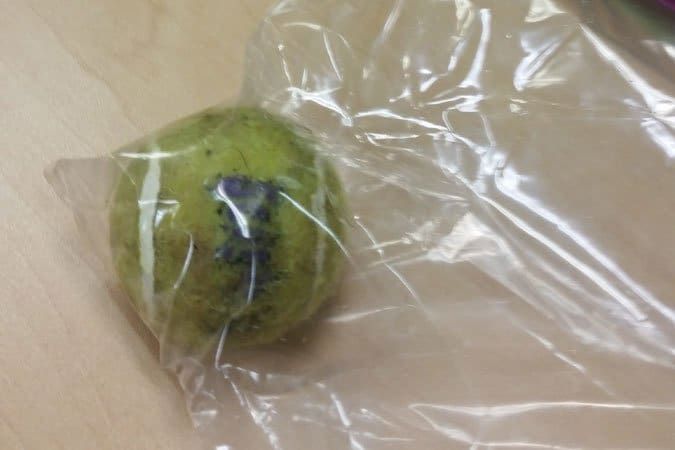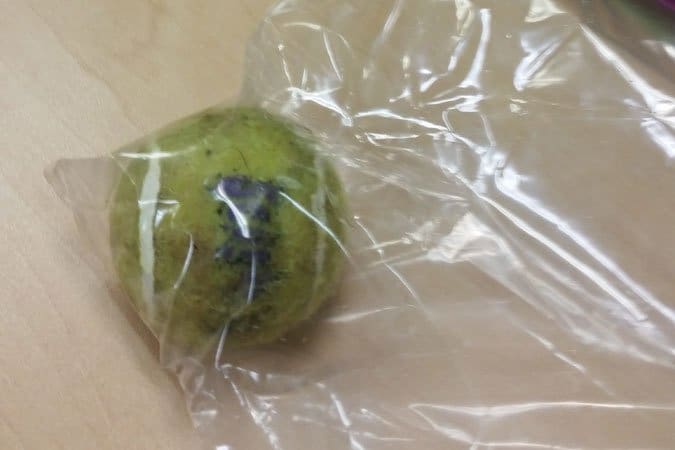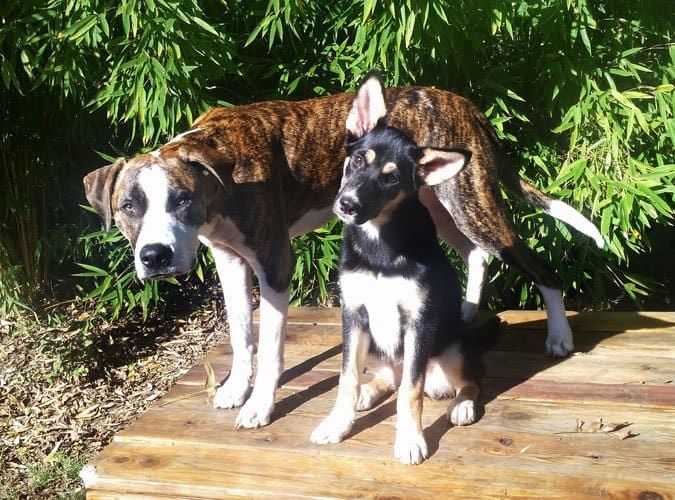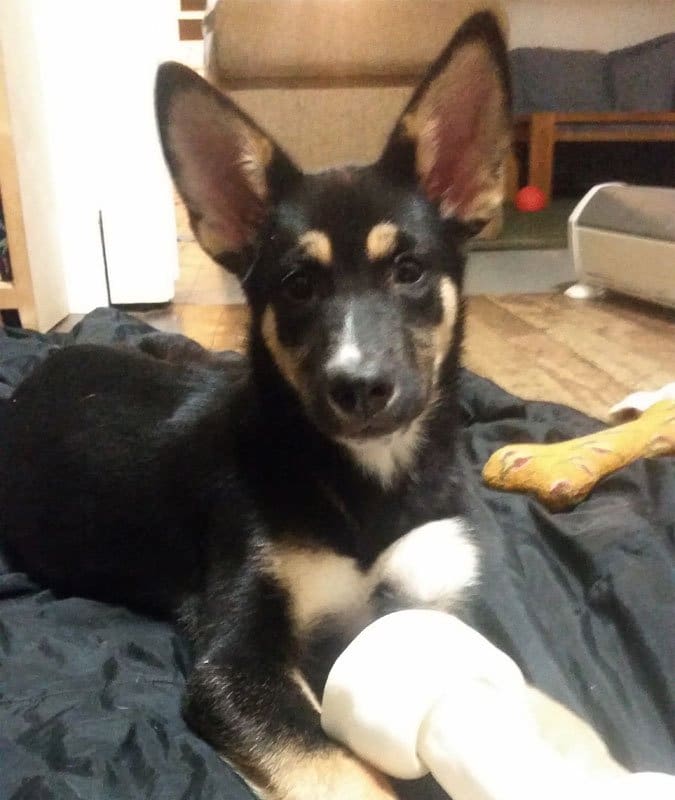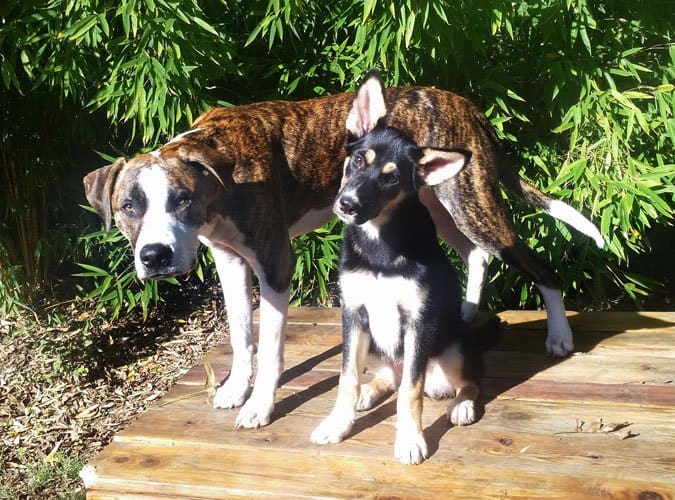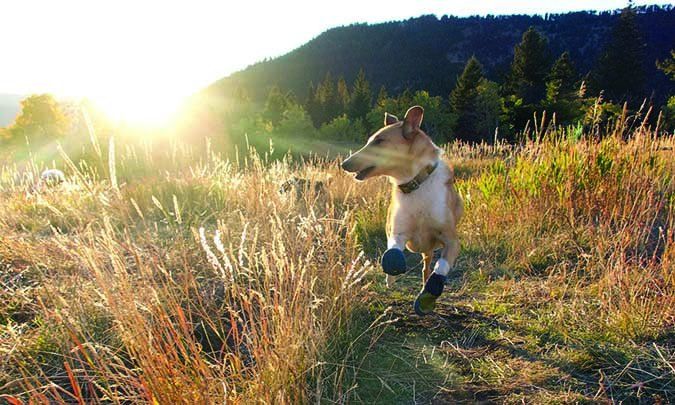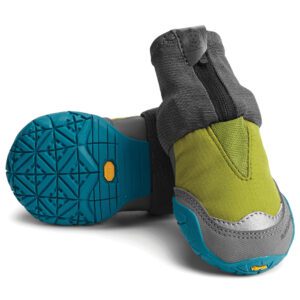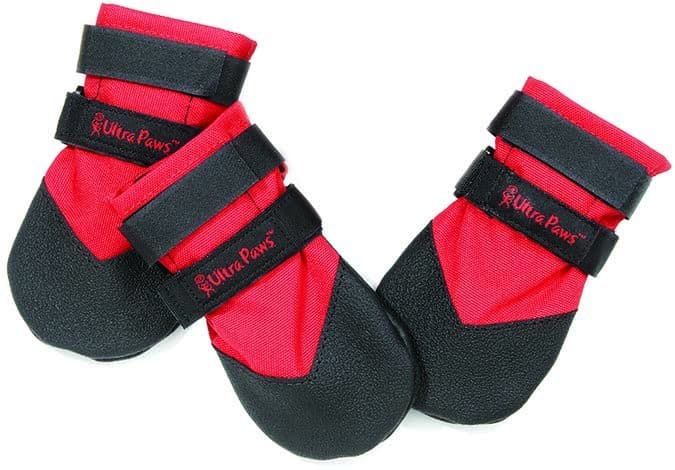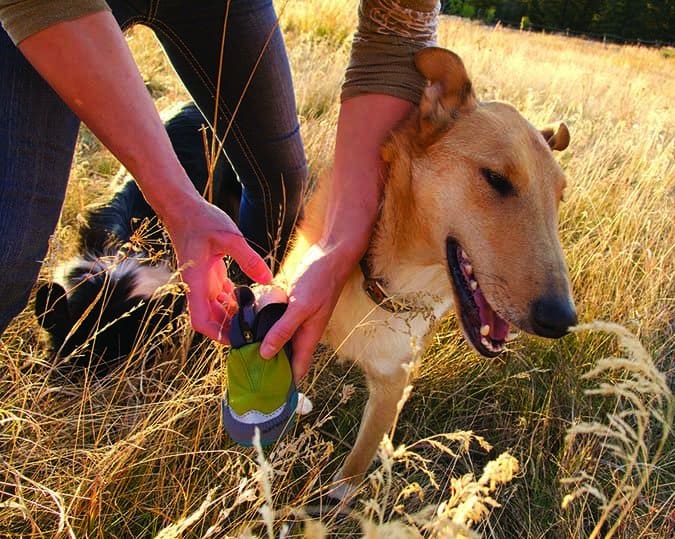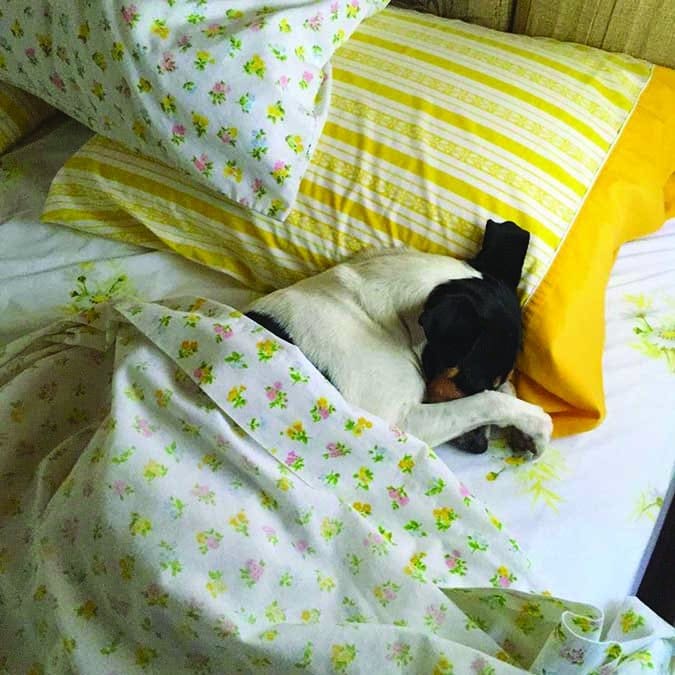Dogs can teach us lots of things. In watching dogs, I learn about enjoying the moment and finding your bliss. In training dogs, I learn about patience, consistency, and the importance of meeting dogs at their level. In being responsible for dogs, I sometimes learn more than I want to know about assorted health challenges – such as retained testicles and, most recently, low thyroid.
Earlier this year, my dog, Saber, unexpectedly gained eight pounds. He has the heavily muscled build of a working Golden Retriever, so it wasn’t glaringly obvious, but there was definitely less “dip” in his waist.
I confirmed the weight gain while consulting with our vet about his then pending re-neuter surgery to extract the undescended testicle not found when neutered with his previous owners. My vet warned that, with the reduction of testosterone, he’d be prone to weight gain. I reduced his daily intake by half – to just one cup of high-quality kibble per day. We are avid walkers, and he gets regular off-leash exercise, so I was certain the weight would melt away.
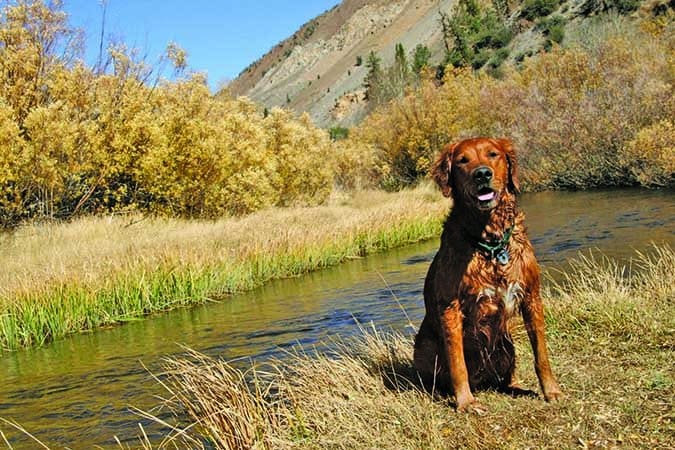
It didn’t.
As the weeks passed, I realized he wasn’t growing coat at the shaved surgical site, and the area experienced a series of pigment changes. He seemed a bit less energetic, but not alarmingly so, and I initially attributed that to his newfound maturity as a four-year-old dog. His coat, overall, had taken on a dull appearance, and he seemed to lack what little undercoat he’d ever had. He also developed a hotspot on the underside of his tail. We went back to the vet.
I suspected a thyroid issue. My vet agreed, and outsourced a comprehensive thyroid panel to the Diagnostic Center for Population & Animal Health at Michigan State University. Ten days later, our suspicion was confirmed: autoimmune thyroiditis.
Dog Thyroids 101
The thyroid is a small, butterfly-shaped gland in the neck, in front of the trachea. It’s part of the endocrine system, and is responsible for producing two main hormones, T3 (tri-iodothyronine) and T4 (thyroxine), that regulate metabolism. We often associate metabolism with how quickly bodies burn calories in relation to weight gain or weight loss, but the body’s metabolism affects a variety of vital functions such as breathing, heart rate, body temperature, central and peripheral nervous systems, muscle strength, cholesterol levels, and more.
Hypothyroidism (underactive or low thyroid) is a common disorder in dogs. A variety of breeds are known to be genetically predisposed, including the Labrador Retriever, Golden Retriever, Dachshund, Boxer, Doberman, and Cocker Spaniel. (It’s normal for sighthounds such as the Greyhound to have relatively low thyroid levels as a result of their unique physiology; these levels are not a sign of pathology in these breeds.)
Inbreeding of close relatives has predisposed individuals to many health issues including autoimmune thyroiditis. According to Sally Lane, DVM, who specializes in integrative and complementary care in Southern California, genetically inherited autoimmune dysfunction of the thyroid gland (autoimmune thyroiditis) is thought to be responsible for the majority of cases – up to 80 percent.
We don’t yet fully understand what triggers the dysfunction, but the veterinary community is exploring several ideas. One theory is that widespread nutrient depletion in the soil impacts the food chain, creating foods that are lower in iodine or selenium, minerals necessary to proper thyroid function.
Another theory is that individuals with low thyroid may have some component of adrenal depletion due to excessive cortisol release from stressors to the system and metabolic demands, which can disrupt thyroid function. Over-vaccination, highly processed foods, widespread use of antibiotics, and exposure to anesthesia all strain the body, which could potentially push a genetically predisposed individual over the edge into clinical hypothyroidism.
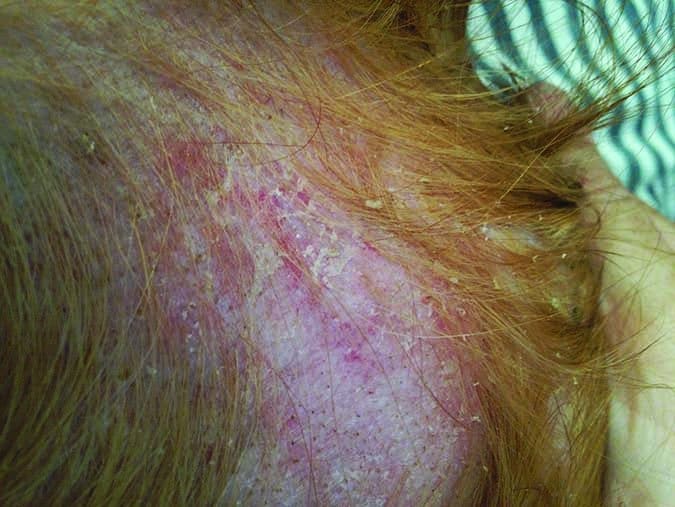
Physical damage to the thyroid, from strong pullers straining on leash, or at the hands of owners issuing collar corrections on training collars, is another theory being considered as a cause of hypothyroidism.
Common Clinical Symptoms of Hypothyroidism in Dogs
Saber presented with a laundry list of the most common clinical symptoms: weight gain; dry, flaky skin; recurring hot spots; and lack of energy. Other possible symptoms include cold intolerance, muscle weakness, especially in the rear, fertility issues, and even behavior changes, such as the sudden onset of anxiety or aggression.
(Note: The latter is why good trainers always recommend a full medical workup when clients report sudden behavior changes. All the behavior modification in the world can’t overcome an issue with a medical component!)
If left untreated, dogs with low thyroid can experience seizures, liver and kidney problems, and reproductive issues – not to mention the health and quality of life issues that accompany prolonged skin conditions and obesity.
The Western Approach to Hypothyroidism
In cases of full-blown autoimmune thyroiditis, the thyroid has been damaged by the body’s own abnormal antibodies. As a result, it is no longer able to produce sufficient amounts of hormones to support the body. In these cases, treatment typically involves replacing the lacking hormone, traditionally with a synthetic thyroid medication such as levothyroxine, commonly sold under the brand name Soloxine, or more recently, ThyroKare.
The synthetic hormone is usually given twice per day, ideally at 12-hour intervals. Some vets feel absorption is improved when given away from meals. Other patients report just as much improvement when the medication is given at mealtimes. Blood levels must be re-checked after starting or adjusting medication dosage, as well as annually to ensure hormone levels remain in a healthy range.
Holistic Treatments for Canine Hypothyroidism
Patients wanting a more natural approach to hormone replacement can consider Nature-Throid, a natural thyroid hormone designed to boost the T3 and T4 levels. Dr. Lane says Nature-Throid is more drug-like in that it’s very targeted in its purpose – to help boost lagging thyroid values – but unlike synthetic levothyroxine, it’s a natural product made from dried pig thyroid. Both the synthetic and natural replacement hormones are dosed similarly, and blood values must be closely monitored to ensure proper dosage. According to Dr. Lane, it sometimes takes a bit more fine-tuning to determine the right dosage of a natural replacement hormone as compared to the synthetic hormone.
With either product, Dr. Lane encourages owners to discuss the benefits of an adaptogenic herb such as ashwagandha, which is known for its immune-modulating effects, with their dog’s treatment team. Adaptogens help the body adapt to stress, and exert a normalizing effect on bodily processes. Products such as Vet Ashwagandha by Ayush Herbs or Withania Complex by Standard Process can help support thyroid function, but do not directly treat hypothyroidism.
The good news is, with either the natural or synthetic replacement hormone, the dog is likely to experience swift relief from many symptoms – especially the weight gain and lethargy. The bad news? Once a thyroid replacement product is started, it’s likely the patient will need it for life, because once the replacement hormones are on board, the thyroid says, “Oh, we have enough of these hormones, I don’t have to work harder to make more.” Dr. Lane says it’s entirely safe to switch from a synthetic product like ThyroKare to a natural product like Nature-Throid while monitoring blood levels to ensure proper dosing.
Integrative Thyroid Support for Dogs
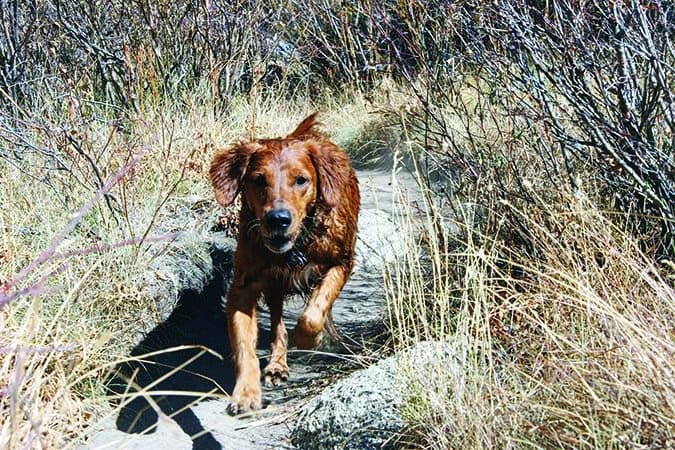
Ideally, potential thyroid issues are recognized early, when they can likely be reversed via supportive care (see “Catching Problems Before they Start,” below). Once the gland has become so damaged that replacement therapy is considered the best option, there are several alternative modalities also thought to be beneficial. They include:
Dog Diet and Nutrition
Feeding minimally processed, whole foods is always a wise choice to help improve overall nutrient absorption and reduce strain on the organs from filtering impurities. However, with any known medical condition, it’s wise to learn about possible disease-specific considerations in order to make educated food choices.
For example, many green, leafy vegetables such as broccoli, kale or bok choy, contain goitrogenic substances that disrupt the production of thyroid hormones by inhibiting iodine uptake. Dr. Lane says green leafy vegetables are important in the diet, as they help with detoxification, metabolic function, and cancer prevention, but they should be steamed to reduce the iodine-blocking effect, or fed raw in moderation. Some whole foods thought to support thyroid function include foods high in omega-3 fats such as sardines, salmon, eggs, summer squash, and sweet red peppers.
Certain supplements can be beneficial, such as milk thistle to support liver detoxification, fish oils to support skin and coat health, and biotin to promote coat growth in dogs experiencing thyroid-induced alopecia.
Chiropractic Help for Dogs
Chiropractic puts the body in a better position to support overall wellness. Dr. Lane says chiropractic adjustments can also be helpful in cases of hypothyroidism where it’s possible trauma to the neck, potentially via a collar, may have contributed to thyroid dysfunction.
Traditional Chinese Medicine and Acupuncture for Dogs
TCM serves to support and strengthen the body as a whole, which allows the body to more effectively combat the effects of symptoms commonly associated with hypothyroidism, and return to balance.
Understanding Alternative Therapies for Canine Hypothyroidism
Many of these modalities draw on some version of the body’s energy. In TCM, that energy is called “qi.” Practitioners of homeopathy often refer to it as the “vital force.” It can be a challenging concept for those raised on conventional veterinary medicine, but Wendy Jensen, DVM, a homeopathic practitioner from Bow, New Hampshire, and author of The Practical Handbook of Veterinary Homeopathy, explains it this way:
“Think about the last time you were getting a cold. You probably knew something was wrong before you were stuck in bed. But if you had gone to the doctor at that point, nothing would’ve shown up – there’d be nothing on your blood work, and you didn’t have a fever. That’s the energetic level; it hasn’t changed anything in your body yet, but your energy has been impacted. That’s the energy where illness starts, and that’s the level we treat,” Dr. Jensen says.
In holistic medicine, practitioners are more concerned with what they’re seeing in the animal in front of them, rather than in the patient’s diagnostic label.
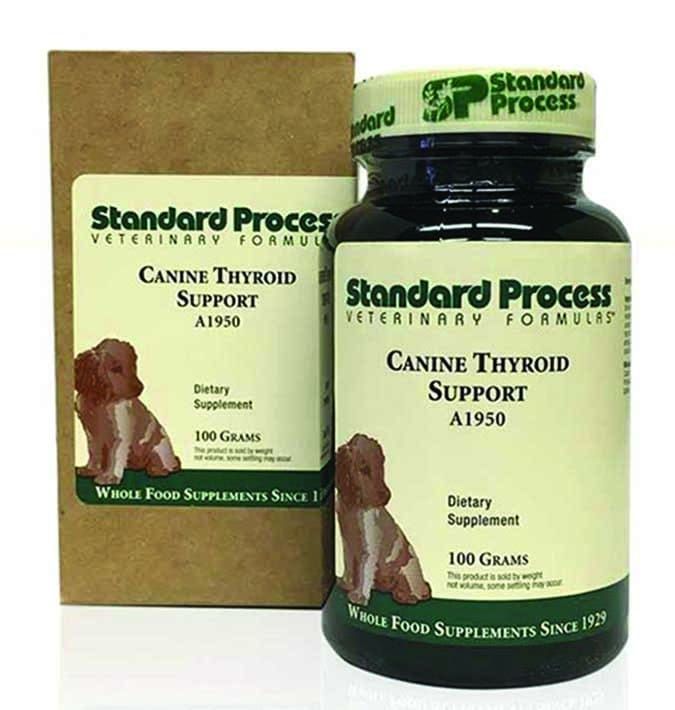
“You note the Western component, but you don’t treat with specific herbs based on that Western diagnosis,” Dr. Lane says. “You’re looking at lots of things with the goal of supporting the body. In Traditional Chinese Medicine, we might look at the tongue and the pulse, and if what we’re seeing there corresponds with dry skin, we’d pick an herbal therapy to enhance circulation.”
Dr. Jensen takes a similar approach as a homeopathy practitioner. It’s not about picking the homeopathic remedy that is designed to treat hypothyroidism; its about looking at all aspects of the individual – from physical issues, to emotional and behavioral issues – and identifying which remedy best supports those symptoms. Whereas as a vet of traditional Western medicine is likely to look at an ear infection and dose antibiotic ointment designed to treat the infected ear, Jensen will dig deeper, often inquiring about personality changes or even if there was difficulty housetraining the dog. This all serves as important information to help detect – and correct – imbalance. “I’ve never known my patients as well as I do now,” she says.
As the unique imbalances are addressed, the body is put into a better position to heal itself to the best of its ability, which leads to an overall improvement in health.
Individual Dogs are Unique
With so much information available at our fingertips, it can be tempting to scour the Internet in search of a magic bullet. A quick Google search offers a well-stocked list of proprietary tonics and tablets, many advertised as “natural” or “holistic.” Owners should always discuss new therapies with a member of their dog’s healthcare team, as even seemingly harmless vitamin supplements can be contraindicated in some cases. Proper holistic care relies heavily on looking at the patient as an individual.
Thyroid Treatment Experiences Among Dogs Vary
On the recommendation of my primary vet (a member of the American Holistic Veterinary Medical Association whom I would describe as being “largely conventional, but alternative-savvy”), we started Saber on a combination of synthetic thyroid replacement (ThyroKare 0.4 mg) and a Standard Process thyroid supplement.
His T4 levels were checked in 30 days, where the 0.4 mg dose was determined to be too high, as evidenced by blood work (the desired range is 0.8-3.5; he tested at 5.8!) and some telltale clinical symptoms of his hormones being thrown into high gear, such as a voracious appetite and mild panting, even at night and early in the morning. The dose was lowered to 0.2 mg and, when re-tested again, his T4 measured at a comfortable 2.2. This is why regular monitoring is important.
Saber’s energy level increased, and he lost the excess weight within a very short time of starting this protocol. But he was still left with itchy, flaking skin, re-occurring hotspots, and intermittently “gunky” ears.
He also started losing massive amounts of coat; he went from a sparsely coated Golden I could brush and hardly pick up any coat, to a dog I’d brush twice per day and get multiple brushfuls each time! My vet assured me the hair loss would cease as the medication worked to normalize the recent roller coaster of hormone levels, and it did.
However, as the other symptoms remained, I switched him to a raw diet and decided to work with a Traditional Chinese Medicine (TCM) practitioner. We are still early in this course of treatment, but so far, she has recommended a couple of minor dietary changes specific to Saber, not as a hypothyroid dog, but based on how he presents as an individual. She also started him on a homeopathic thyroid support product (Professional Formula’s Thyroid Liquescence), has counseled us on supplements both for whole-body support and for specific needs, and has performed two acupuncture treatments.
So far, he’s still itchy and very prone to hot spots. With this news, our TCM practitioner is re-visiting Saber’s intake notes to see if she feels a specific Chinese herbal remedy would be beneficial.
Integrated Approach to Canine Hypothyroidism
While some people have an overall approach they are steadfastly most comfortable with, Dr. Lane believes treating hypothyroidism doesn’t have to be about choosing between “conventional” or “alternative” options.
“It’s important to take an integrated approach,” she says. Whether or not it’s determined the patient needs hormone replacement therapy (a more conventional veterinary medical treatment, even when using a natural hormone replacement product), an integrated approach – designed to support the whole dog, not just the thyroid – can help produce better patient outcomes.
In contrast, some alternative practitioners, such as Dr. Jensen, do feel their modalities work much better when not paired with more traditional approaches to medical care. They believe traditional approaches interfere with the “vital force’s” attempt to restore balance with the help of alternative therapies.
In the end, we believe what’s most important is for dog owners to be willing to educate themselves about available options, consider their resources (both in terms of access to qualified alternative practitioners, and financial resources), and choose a course of treatment, or combination of treatment options, with which they are most comfortable.
Catch Your Dog’s Thyroid Problems Before They Start?
Since it’s rare to successfully wean dogs off of thyroid replacement products (synthetic or natural) once a dog has a well-established hypothyroid condition, one idea is for owners of breeds genetically predisposed to thyroid issues to proactively look for changes in thyroid numbers. Subtle changes in blood work will precede clinical signs. According to Hemopet, classical clinical signs will appear only after more than 70 percent of the thyroid gland is damaged.
This requires a more complex thyroid panel, traditionally offered by Hemopet or Michigan State University, but when findings reveal subtle changes, or show a dog as being in the “low normal” range, Sally Lane, DVM, who specializes in integrative and complementary medicine, says that’s the perfect time to start supportive treatment.
“The conventional approach might be to not do anything other than make a note to re-check the numbers in 6-12 months, but, from a holistic medicine perspective, we’re trying to give the thyroid a little boost of support and see if that helps the individual,” Dr. Lane says. Additionally, Wendy Jensen, DVM, a homeopath from Bow, New Hampshire, notes dogs who develop hypothyroidism are more likely to eventually develop megaesophagus and laryngeal paralysis, making it even more important to prevent full-blown thyroid disease whenever possible.
When caught early, Dr. Lane typically recommends supportive treatment such as a whole-food glandular product given in combination with a high-quality vitamin and mineral supplement matched to the dog’s diet. Glandulars are supplements made from organs and tissues of mammals, and are based on the idea that an extract of a specific organ can strengthen the organ. Dr. Lane often recommends T-150 by Xymogen, or one of the Standard Process thyroid products such as Canine Thyroid Support.
Kelp is often touted as a beneficial supplement for dogs with hypothyroid, due to its high iodine content. In the early stages of thyroid dysfunction, Dr. Lane says a high-quality kelp product can be beneficial. However, dogs who are being treated with some form of thyroid replacement (synthetic or natural) should not be given additional iodine or iodine-rich seaweed supplements, such as kelp, as it can create iodine excess and interfere with medication. A commercially prepared food, or high-quality vitamin and mineral supplement for dogs fed home-prepared diets, will offer sufficient and safe amounts of iodine to help support proper thyroid function without compromising medication.
“Once the dogs are already hypothyroid, adding kelp or something rich in iodine can cause this cascade effect where the body reacts by destroying the thyroid gland even more,” Dr. Lane says. “But when it’s a case where we’re looking at a low-normal and we want something to boost the system, kelp can support the body and, in certain individuals, it may help prevent the dog from developing hypothyroidism.”
A Shift in Medical Thinking
Similarly, Dr. Jensen encourages dog owners to develop a willingness to look at health challenges as potential puzzle pieces to a bigger picture, not just as stand-alone incidents. For example, in a young dog with reoccurring ear infections or other skin issues, it’s important to consider why these issues are developing.
“Ears don’t just get infected,” she says. “It comes from the inside out; the whole dog is involved in creating that gunky ear. The cells that affect that ear are coming from somewhere else inside the body – the whole dog is producing the gunky ear. When you can treat the whole body versus just making the symptoms go away, the dog will have a much healthier life.”
In many cases, the willingness to think proactively and explore what is creating the susceptibility to ear infections or other reoccurring, seemingly minor issues – rather than simply suppress the symptoms – can reduce the likelihood the dog will experience thyroid or other issues later in life, Dr. Jensen says.
Another sign to watch for, she adds, is the cessation of symptoms – the dog who used to get ear infections, but hasn’t had one in a long time, or the dog who used to battle digestive issues, but now has a calm GI tract. This seems like it would be a good thing, but, for Dr. Jensen, it’s a red flag that an underlying disease is getting deeper and attacking the organs and glands. For her, it can be a clear warning sign of thyroid problems.
Stephanie Colman is a writer and dog trainer in Southern California.


